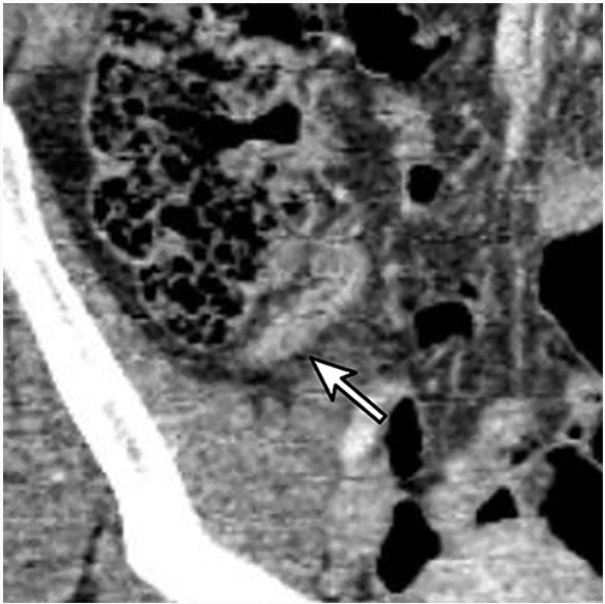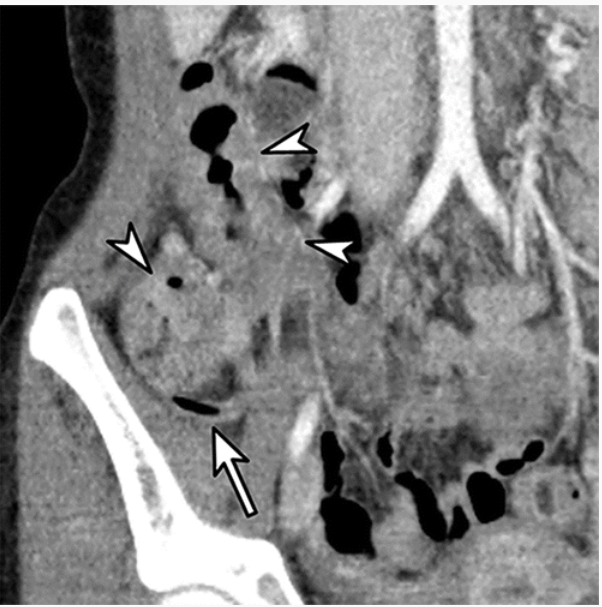Appendicitis Clinical Scoring System is a Tradeoff for Radiologists
Implementing a clinical scoring system reduces CT use, but it comes with a cost – lower diagnostic accuracy.
Using a scoring system for adolescent and young adult patients who are suspected of appendicitis can be a trade-off – it can help identify individuals who are best suited to CT scans, but it can also significantly reduce diagnostic accuracy.
In recent decades, CT utilization has been on the rise, leading providers to search for more targeted ways to pinpoint which patients actually need the exam, as well as lower the needed radiation dose. Reaching this goal is important because CT pre-operative imaging is standard for an acute appendicitis diagnosis, said a team of investigators from Soongsil University in Seoul, South Korea, in a May 18 study published in Radiology.
“In this study, we measured the reduction of CT use and the diagnostic accuracy in simulated patient triaging using clinical scoring systems,” said the team led by Hyunjoo Song, from Soongsil University’s School of Computer Science and Engineering. “We hypothesized that patient triaging with clinical scoring systems could reduce CT use without a substantial loss of diagnostic accuracy in adolescents and young adults with suspected appendicitis.”
Related Content: Abdominal CT Raises Blood Cancer Risk in Appendicitis Patients, Particularly Kids
However, the results of the study yielded “disappointing results,” the team said.
In a 28-year-old woman with right lower quadrant pain, coronal contrast-enhanced lower-dose (2 mSv) CT scan obtained with 4.0-mm section thickness and 1.0-mm reconstruction interval shows appendiceal wall thickening and mild periappendiceal fat infiltration (arrow). Patient was categorized to low-probability group for appendicitis by all five scoring systems, but as positive at CT. Appendicitis was pathologically confirmed after appendectomy.
Credit: RSNA

For their retrospective study, conducted between December 2013 and August 2016, they tested five scoring systems (adult appendicitis, appendicitis inflammatory response, modified Alvarado, Broek, and Christian scores) and categorized 2,888 patients between ages 15 and 44 with suspected appendicitis into low-, intermediate-, and high-probability groups. Of the patients, 1,088 ultimately received a positive diagnosis; 1,800 did not.
According to their analysis, CT reduction rates for the five scoring systems ranged from 55.6 percent to 71.1 percent. However, those drops were also accompanied by lower sensitivity (48.7 percent to 81.2 percent) and specificity (79.0 percent to 97.8 percent).
In a 22-year-old woman with right lower quadrant pain, coronal contrast-enhanced lower-dose (2 mSv) CT scan obtained with 4.0-mm section thickness and 1.0-mm reconstruction interval shows normal appendix with internal air density (arrow). Patient was categorized to high-probability group for appendicitis by three of five scoring systems (adult appendicitis score, appendicitis inflammatory score, and modified Alvarado score), but as negative at CT. Colitis was suggested as an alternative diagnosis at CT (arrowheads). Patient recovered without surgery.
Credit: RSNA

“Targeting sensitivity of 97.6 percent and specificity of 94.9 percent, which were achieved when CT was used for all patients with suspected appendicitis, the CT reduction rates of all five clinical scoring systems were 0 percent,” the team said. “Even when both target sensitivity and specificity were lowered to 95.0 percent, the clinical scoring systems yielded small CT reduction rates ranging from 0.1 percent to 11.2 percent.”
These results, the team said, reiterate the findings from previous studies that support the routine – rather than selective – use of CT. However, in recently released guidelines, the World Society of Emergency Surgery supported implementing clinical scoring systems for selective use. But, the team explained, if they had applied the scoring systems based on those guidelines, a significant number of patients with appendicitis would have been misdiagnosed and would have experienced complications.
Related Content: Getting an Abdominal CT in the ED Could Depend on Age
The results of their study could potentially be explained, the team said, by CT’s significant diagnostic performance and its provision of alternative diagnoses that can frequently lead to hospitalization or surgery.
In an accompanying editorial, Vincent M. Mellnick, M.D., associate professor and abdominal imaging section chief at the Mallinckrodt Institute of Radiology at Washington University School of Medicine, agreed with the assessment of Song’s team – their findings further support widespread CT use.
Still, it is possible, he said that developing clinical scoring systems that work as intended for patients suspected of appendicitis could effectively reduce the number of patients who eventually undergo a CT scan.
Ultimately, he said, a hybrid approach could be beneficial.
“Perhaps the best approach is to use both clinical scoring and imaging in all patients, particularly in cases with equivocal imaging findings,” he said. “More study on this topic is warranted.”
For more coverage based on industry expert insights and research, subscribe to the Diagnostic Imaging e-newsletter here.
Study with CT Data Suggests Women with PE Have More Than Triple the One-Year Mortality Rate than Men
April 3rd 2025After a multivariable assessment including age and comorbidities, women with pulmonary embolism (PE) had a 48 percent higher risk of one-year mortality than men with PE, according to a new study involving over 33,000 patients.
The Reading Room: Racial and Ethnic Minorities, Cancer Screenings, and COVID-19
November 3rd 2020In this podcast episode, Dr. Shalom Kalnicki, from Montefiore and Albert Einstein College of Medicine, discusses the disparities minority patients face with cancer screenings and what can be done to increase access during the pandemic.
Predicting Diabetes on CT Scans: What New Research Reveals with Pancreatic Imaging Biomarkers
March 25th 2025Attenuation-based biomarkers on computed tomography (CT) scans demonstrated a 93 percent interclass correlation coefficient (ICC) agreement across three pancreatic segmentation algorithms for predicting diabetes, according to a study involving over 9,700 patients.
Can Photon-Counting CT be an Alternative to MRI for Assessing Liver Fat Fraction?
March 21st 2025Photon-counting CT fat fraction evaluation offered a maximum sensitivity of 81 percent for detecting steatosis and had a 91 percent ICC agreement with MRI proton density fat fraction assessment, according to new prospective research.